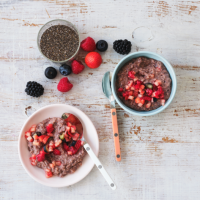One of the most common things we parents struggle with is how to get your kids to eat vegetables, or at the very least – try them.
Recently, I posted a question on Mouths of Mums ‘answers’ because I wanted to write articles on the issues that are important to you! Thank you so much for the many wonderful topics you offered to the question: “What are your biggest parenting concerns”? The biggest concern was – how to get young children to eat vegetables?
Here are some tips that have worked with our son as well as some tried and tested ideas from other mums that you can try in your family.
As parents, we KNOW it is important to have our kids eat vegetables, right? But sometimes it can be such a huge challenge.
One of the most important things I have found is it is important to do your best to stay as calm about it as you can.
Stay calm
I found being stressed and worried about our child’s food intake made it worse for our son and made it harder for me to be creative and find fun – win/win – solutions. I’ve never had a great idea when anxious or stressed but I have had many when I’ve been level-headed and open about the problem.
I know it’s hard … but everyone will tell you that stress doesn’t help. However, having said that, if you are concerned that your child really isn’t getting sufficient nutrition, please see your family doctor so they can direct you to professional help if needed. However, if all is well and you just want your children to eat a greater variety of vegetables then these are tried and tested tips that work and might help you.
Take it slow
I decided to take a really slow approach to our son’s nutrition plan and only worked on introducing one new vegetable at a time. This has been a successful and relatively stress-free way (well mostly stress-free) to get our son Cameron to eat vegetables and now he eats MOST vegetables and he’s only 6 years old. He eats: broccoli, corn, yellow and red capsicum (peppers), green beans, cabbage, snow peas, celery, carrots, cucumber, cauliflower, tomatoes, lettuce, spinach, Asian greens, bean sprouts and most fresh herbs like basil, parsley, dill and coriander which he picks from the pots on our balcony and gobbles fresh. Not bad for 6 years old right? But it wasn’t always this way. Broccoli took the longest – about 1 year of trial and error until the day he said, “Nice dinner daddy, but you just didn’t give me enough broccoli!” Hooray! We did it!
Be open to surprises
Last week we roasted delicious Brussel sprouts and my husband and I were eating them out of the pan (seriously yum!) and Cameron said could I try one? Yes! I was as surprised as you are. Well, he bit one and said “that’s enough” so we left it at that, as we were just happy he tried one. Last night we put some Brussel sprouts on his plate and he ate two halves without a fuss or comment. How?
Tastes develop over time … try it 12 times
I believe it was our slow, easy-going, step-by-step approach to introducing vegetables one at a time. And most importantly, we’ve talked with Cameron about how it can take up to 12 times of tasting something before you acquire or enjoy the taste (not sure where I read this but it’s been a helpful discussion point). We also talked to Cameron about our own personal food stories, like my husband explained that he took a long time to like olives and now he loves them!
So we have encouraged our son to just taste vegetables at least 12 times (yes, when he has wanted to we have kept a chart to tick the number of times but this hasn’t been often).
All we ever expect Cameron to do is to interact with the vegetable in some way. Sometimes it is to just smell it, other times lick it, other times to bite it (and he is always allowed to spit it out – so he has no fear of trying something)…and we encourage tasting it in a light-hearted and fun way! I don’t want Cameron to associate vegetables with pain and tears, which many of us remember in our childhood, BUT associate veggies with nutrition, enjoyment and wellbeing.
Education about the benefits of veggies
We also talk a lot about how good vegetables are for our body and research the nutritional value of some vegetables online. We do this a lot especially when we are cooking. This way Cameron knows why he eats different kinds of vegetables and how they energise him and helps him to grow a healthy and strong body.
OK – yes this all takes a little more time – it takes patience and a light-hearted approach BUT what is the alternative – arguments, stress and kids who HATE eating vegetables? My focus is to give our son a life skill – the love of healthy food to give him the best chance for wellbeing when he grows up. Good habits stated in childhood are more likely to continue into adulthood. However, because all this takes a little or a lot time here’s how you can get some veggies into your kids in the meantime.
Hide the vegetables … BUT only in the short term
In the short term, you can hide the vegetables wherever possible inside other dishes. Spaghetti bolognaise is the favourite place to hide loads of grated carrot, celery and zucchini. The kids don’t even know they are eating so many portions of vegetables as they gobble it down. There is another great article on this topic at the end.
A long-term approach
Hiding veggies is a good short-term approach so you get veggies into the kids, but this is NOT a long-term approach. In the long term you want to help your children develop a love for nutritious food so you give them a good foundation for a healthy life and this is where your creativity comes in.
Simple ideas include sourcing colourful vegetables, getting the kids involved in planning the menu, buying the vegetables and preparing them with you. We also play a game with Cameron, when we cut up the veggies for the dinner my husband and I say, “I hope the carrot thief doesn’t come and steal the carrots”. Cameron then comes in “steals” the veggies and eats them raw before dinner – this is great to get his digestion started.
Practical ideas
I’ve been sharing my ideas with friends and family getting ideas as well. That’s a great way we can help each other. My friend Nicole said she got her 2 year old to eat fresh crunchy beans by pretending it was a whistle! She said it was music to her ears to hear “more beans please daddy.”
And all kids are different, even in the same family. Take my friend Kellie; she has a two year old, who really loves her veggies. Her toddler eats them with relish, eats them often and will even choose to eat extra serves of vegetables in preference to having dessert. Remarkable.
But gee, her five-year brother is another story altogether. Each evening at their home, there is an ongoing struggle to get him to eat any vegetables and that has caused stress for everyone in the family at mealtimes. So, she decided to find fun ways to get her five-year-old eating vegetables.
Here’s her BEST way to get both her children eating LOTS of vegetables. It was an idea she found at one of Jamie Oliver’s restaurants. Both kids were served a jar of vegetables.
A salad in a jar
Salad in a jar is layers of bright coloured vegetables stacked in a glass jar with a lid on with enough space for shaking. The novelty value was high. The kids had a blast shaking the vegetables so that the vegetables were all mixed together. At home, Kellie makes vegetables in a jar all the time now with the kids.
Vegetables that have never before been consumed are now regularly eaten, particularly things like mung beans, raw beetroot, salad leaves, and snow pea sprouts.
It’s a glorious outcome. She has become really inventive of late and has just started to add pearl barley, wild rice, and quinoa too. And best of all the kids think it’s fun, eat loads of veggies and simply love it! This is what I call win/win!
Make food a surprise!
Here’s where you can really get your creative juices going. When the kids come home from school, the afternoon snack can be artistic vegetables. It’s easy to make a fun face and the kids eat it with greater enthusiasm.
Add words like “Oh no did you just eat his eyes?” These ideas take only a little extra time, thought and planning, but bring fun into eating and help remove stress. I like the idea of a few more minutes in planning rather than minutes or hours of arguing, complaining and crying when trying to get veggies in!
Experiment!
The other thing my friend Kellie has taught me is to be courageous and open minded about experimenting with LOTS of different types of vegetables. She recently introduced her kids to edamame. Edamame is the Japanese name for boiled green soybeans, picked early (you may have seen them at the local sushi place). They are delicious, with a lovely beany-nutty flavour. More than that, as the kids peel them, they are fun to eat.
It’s an “active food” that they kids get to prepare or peel for themselves. This involvement seems to help them eat better, What’s more, edamame are the PERFECT afternoon snack, easy to prepare and they the kids with LOTS of fibre, and as much protein as it does carbohydrate, along with many valuable vitamins and minerals, being a particularly good source of Copper, Vitamin K, Folate and Manganese.
What’s the message here? Keep trying MANY different types of vegetables until you find a whole range that are eaten with joy. The vegetables the kids like may not be the familiar ones we grew up with.
Now you have a heap of ideas to try and I hope we’ve got your creative juices flowing. Let me know the clever things you’ve created to get your kids eating healthy vegetables. Everyone can benefit if we share great tips with each other!
Here are some other great articles on Mouths of Mums on the topic:
- 5 food sentence swaps
- Create happy meal times
- 7 tips to keep your kids healthy
- My 5 top tips for hiding veggies
- How to encourage healthy eating in your home
- Tips for making mealtimes with your toddler easy
What are the strategies that have been effective with your fussy eaters?























7:23 pm
10:17 pm
1:21 pm
9:09 pm
7:45 pm
-

-
-
mom94125 replied
- 19 Oct 2015 , 6:01 pm
Reply7:17 pm
1:19 am
5:37 pm
10:07 pm
-

-
-
dr rosina mcalpine replied
- 17 Nov 2014 , 3:18 pm
Reply12:24 pm
-

-
-
dr rosina mcalpine replied
- 03 Sep 2014 , 2:40 pm
Reply3:34 pm
-

-
-
dr rosina mcalpine replied
- 02 Sep 2014 , 7:31 am
Reply2:00 pm
-

-
-
dr rosina mcalpine replied
- 02 Sep 2014 , 7:30 am
Reply2:39 pm
-

-
-
dr rosina mcalpine replied
- 22 Aug 2014 , 12:31 pm
-

-
-
june11 replied
- 11 Dec 2014 , 2:16 am
Reply1:17 pm
-

-
-
dr rosina mcalpine replied
- 19 Aug 2014 , 4:15 pm
Reply2:10 pm
-

-
-
dr rosina mcalpine replied
- 19 Aug 2014 , 4:14 pm
Reply9:39 am
-

-
-
dr rosina mcalpine replied
- 19 Aug 2014 , 4:11 pm
Reply4:26 pm
12:51 pm
-

-
-
dr rosina mcalpine replied
- 06 Aug 2014 , 2:49 pm
Reply4:38 am
-

-
-
dr rosina mcalpine replied
- 04 Aug 2014 , 9:31 am
Reply11:41 pm
- 1
- 2
- …
- 4
- »
Post a commentTo post a review/comment please join us or login so we can allocate your points.